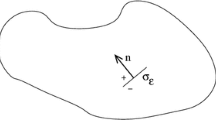Abstract
In this paper we present a method for estimating the statistical properties of two well-known edge detectors: the non maxima suppression and the zero crossing of the Laplacian algorithms. Assuming the data are corrupted by an additive Gaussian noise we derive the probability density function (pdf) of the detected edge. Thanks to this approach the computed pdf explicitly depends on the parameters of the edge detector. Experimental results on real images and comparisons with Monte Carlo simulations are presented in order to characterize the performance of this method.
Similar content being viewed by others
References
Roberts, L.G.: Machine perception of three-dimensional solids. In: Optical and Electro-Optical Information Processing. MIT Press, Cambridge (1965)
Sobel, I.: Camera models and machine perception. Standford AI MEMO 121, Dept. of Computer Science, Standford University (1970)
Gonzalez R. and Woods R. (1992). Digital Image Processing. Addison-Wesley, New York
Canny J.F. (1986). A computational approach to edge detection. IEEE T. PAMI 8(6): 679–698
Deriche R. (1987). Using Canny’s criteria to derive a recursively implemented optimal edge detector. Int. J. Comp. Vision 1(2): 167–187
Shen J. and Castan S. (1992). An optimal linear operator for step edge detection. Comp. Vision Graph. Image Process. 54(2): 112–133
Demigny D. (2002). An optimal linear filtering for edge detection. IEEE Trans. Image Process. 11(7): 728–737
Rosenfeld A., Hummel R. and Zucker S. (1976). Scenes labelling by relaxation operation. IEEE Trans. Systems Man Cyber. 6(6): 420–453
Hancock E.R. and Kittler J. (1990). Edge-labeling using dictionary relaxation. IEEE Trans. PAMI 12: 165–181
Christmas W., Kittler J. and Petrou M. (1995). Structural matching in computer vision using probabilistic relaxation. IEEE Trans. PAMI 17: 749–764
Sitharama Iyengar S. and Deng W. (1995). An efficient edge detection algorithm using relaxation labeling technique. Pattern Recogn. 28(4): 519–536
Papachistous P., Petrou M. and Kittler J. (2000). Edge postprocessing using probabilistic relaxation. IEEE Trans. Systems Man Cybern. B 30(3): 383–402
Lyvers E.P. and Mitchell O.R. (1988). Precision edge contrast and orientation estimation. IEEE Trans. PAMI 10(6): 927–937
Marimont D.H., Rubner, Y.: A Probabilistic framework for edge detection and scale selection. In: Proc. of Sixth Int. Conf. Computer Vision, Bombay, pp. 207–214 (1998)
Touzi R., Lopes A. and Bousquet P. (1988). A statistical and geometrical edge detector for SAR images. IEEE Trans. Geosci. Remote Sensing 26(6): 764–773
Tupin F., Maître H., Mangin J.-F., Nicolas J.-M. and Pechersky E. (1998). Detection of linear features in SAR images: application to road network extraction. IEEE Trans. Geosci. Remote Sensing 36(2): 434–453
Destrempes F. and Mignotte M. (2004). A statistical model for contours in images. IEEE Trans. PAMI 25(5): 626–640
Konishi S., Yuille A.L., Coughlan J.M. and Chun Zhu S. (2003). Statistical edge detection: learning and evaluating edge cues. IEEE Trans. PAMI 25(1): 57–74
Papoulis A. (1991). Probability, Random Variables and Stochastic Processes, 3rd edn. McGraw-Hill, New York
Ramdani S., Bouchara F. and Djemal K. (2004). Probability distribution of sub-pixel edge position. Signal Process. 83(3): 445–452
Genz A. (1992). Numerical computation of multivariate normal probabilities. J. Comput. Graph. Statist. 1(2): 141–149
Sheil J. and O’Muircheartaigh I. (1977). Algorithm AS 106: the distribution of non-negative quadratic forms in normal variables. Appl. Statist. 26(1): 92–98
Bouchara F. (2004). Efficient algorithm for the computation of the second order moment of the subpixel-edge position. Appl. Opt. 43(23): 4550–4558
Author information
Authors and Affiliations
Corresponding author
Rights and permissions
About this article
Cite this article
Bouchara, F., Ramdani, S. Statistical behavior of edge detectors. SIViP 1, 273–285 (2007). https://doi.org/10.1007/s11760-007-0024-5
Received:
Revised:
Accepted:
Published:
Issue Date:
DOI: https://doi.org/10.1007/s11760-007-0024-5




